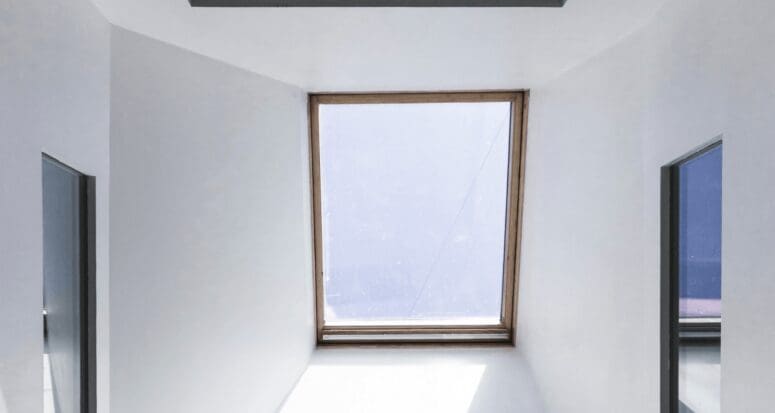Do Skylights Increase Home Value? What Homeowners Need to Know
- Published on
- 7-8 min read
-
 Evette Zalvino, Contributing AuthorClose
Evette Zalvino, Contributing AuthorClose Evette Zalvino Contributing Author
Evette Zalvino Contributing AuthorEvette is just your average HGTV fan who dreams of having a home worthy of being on one of those shows. When she isn't writing for HomeLight, she's working at her local real estate office. In her downtime, you'll find her searching for the next great hiking trail in her area.
-
 Christopher Rogacz, Former Associate Editor, Seller Resource CenterClose
Christopher Rogacz, Former Associate Editor, Seller Resource CenterClose Christopher Rogacz Former Associate Editor, Seller Resource Center
Christopher Rogacz Former Associate Editor, Seller Resource CenterChristopher Rogacz was previously an associate editor for HomeLight's Seller Resource Center based in Washington, DC. His background is in journalism, architecture, urban policy, and housing. He holds a master's degree from the Graduate School of Design at Harvard University.
Did you know that lighting can play a big part in how we think and feel throughout the day? When exposed to natural light, we become more creative and tend to be in a good mood. Sunlight also improves our cognitive performance and regulates our circadian rhythm, which is excellent for productivity in the office and at home. Given these benefits, you may be wondering whether a skylight increases the value of your home.
We’ve done the homework for you if you’re wondering if you should take the plunge and invest in a few skylights. We also chatted with Dawn Rushton, a real estate agent from Maple Valley, WA, who ranks in the top 1% of agents in her area, for some insight.
Skylights are wonderful here in the Pacific Northwest where we don’t have a lot of light. If the house tends to be dark, then by all means, I think it’s a good investment, especially for kitchens, bathrooms, and hallways.
 Dawn Rushton Real Estate AgentClose
Dawn Rushton Real Estate AgentClose Dawn Rushton Real Estate Agent at The Dawn Rushton Real Estate Group Currently accepting new clients
Dawn Rushton Real Estate Agent at The Dawn Rushton Real Estate Group Currently accepting new clients
- Years of Experience 41
- Transactions 598
- Average Price Point $477k
- Single Family Homes 536
What are the benefits of skylights?
“Skylights are wonderful here in the Pacific Northwest where we don’t have a lot of light,” Rushton says. “If the house tends to be dark, then by all means, I think it’s a good investment, especially for kitchens, bathrooms, and hallways.”
Other than adding natural light to a room, skylights also have other benefits.
- Improved wellbeing. Natural light has been proven to improve our moods, ward off seasonal depression, boost the immune system, and feel more energized.
- Add visual interest. Skylights can add to the overall architectural design of your home if you choose a skylight that complements your home’s design. Skylights add a touch of modern flair to a home, but if placed in a prominent location on a traditional-style home, it could detract from the traditional charm.
- Energy savings. When skylights face the south, you can increase the temperature of a room (ideal for cold winters), and if you choose skylights with built-in shades, you can close them to prevent the space from getting too warm. You could also earn a 26% federal tax credit when installing solar-operated skylights during 2022.
- Improve air circulation. Open skylights are great for airing out any space and help air circulation. If you’re worried about it raining when the window is open, there are skylights with an integrated rain sensor that will close them for you when it detects the first sprinkle.
Types of skylights
There are three popular types of skylights:
- Fixed. Fixed skylights are just windows for your roof. They do not open, and their intended purpose is to add light to any room, and that’s all.
- Tubular. Tubular skylights are easy to install and use a reflective tube to funnel the sunlight into tight spaces like hallways, pantries, and closets.
- Vented. Vented skylights are ideal for rooms with excess moisture like the kitchen or bathroom or wherever you’d like more airflow. The skylights can be opened manually or electronically.
Skylight features to consider before buying
When you decide which type of skylight you’d like to install, there are a few important factors and features you’ll need to consider.
Glazing
The material installed inside the skylight’s window frame is referred to as glazing. The most common types are going to be plastic or glass.
- Skylights with plastic glazing tend to be less expensive and more durable than other materials. Acrylic glazing is the most affordable option, but they’re easily scratched if hail or debris hits it. Polycarbonate is more durable. All plastic glazing is susceptible to discoloring with age.
- Skylights with tempered glass are scratch-resistant and heat-treated to improve durability. If these skylights break, the glass will shatter into tiny granules. Due to the way it shatters, windows with this type of glass are a safe option. Plus, they block noises from the outside.
- Skylights that use laminated glass feature a thin layer of PVB (polyvinyl butyral) or EVA (ethylene-vinyl acetate) sandwiched between two layers of tempered glass. If these windows were to break, the tempered glass granules would stick to the center layer instead of falling.
Ratings
Skylight manufacturers run their products through various tests for blockage of UV rays, solar heat gain, and heat loss. So when browsing skylight options, it’ll help if you know what the energy performance ratings mean.
- U-Value. This rating measures the heat flow (both going in and going out) throughout the skylight (frame, glazing, and all related parts). The lower the U-value, the better the skylight resists heat flow.
- R-Value. This rating measures the glazing’s insulation value. The higher the R-value, the better it insulates. For example, the low-e insulating glass will have argon gas between the panes, thus offering twice as much insulating power as your average dual-glazed glass.
- UV Blockage. This rating is an approximation by the manufacturers and measures the percentage of UV rays blocked by the skylight’s glazing.
- Shading coefficient. This rating measures how much solar heat gains through the skylight’s glass. The lower the shading coefficient is, the lower the solar heat gain is.
- Visible light transmittance (VLT). This rating indicates how much sunlight the skylight comes through the skylight. If the glazing is tinted, it blocks glare (and sunlight) and will have a low VLT rating. Skylights with high VLT ratings will provide lots of natural light.
Shape
Skylights come in various shapes and sizes — circles, triangles, rectangles, and so on. However, the shape you should be looking at is the shape of the glazing. Flat glazing may seem the go-to choice, but raised designs like domes, pyramids, and arched shapes allow more light to enter from extreme angles.
Operable controls
Manufacturers who make skylights that can be opened may offer several ways of operating them.
- Manual. Skylights that can be opened manually are an economical choice for homeowners who want to enjoy some fresh air. These units can be opened and closed by using an extension pole.
- Motorized. Motorized skylights can be controlled by a switch on the wall or remote control. A simple two-function skylight can be wired into a wall-mounted light switch. Complex skylights that feature built-in shades or smart home integration can be controlled through touchscreen control.
- Automated. Automatic skylights will operate when they detect rain, wind, and when a room reaches a specific temperature. These skylights can also be programmed to operate at preset times via wireless remote control.
Deck-mounted vs. Curb-mounted
The frame of a deck-mounted skylight will be connected to the roof directly, whereas a curb-mounted skylight will be connected to a “curb,” or a raised wooden frame attached to the roof.
Deck-mounted skylights are easier to install and don’t require any water-sealing. That said, they don’t offer a varied selection of sizes, so it may not fit an existing roof hole.
How much do skylights cost?
The average homeowner can expect to spend around $1,750 to install a skylight, although the typical price range is between $1,016 and $2,589, according to HomeAdvisor. The actual price will depend on various factors, such as the type and size of the skylight, the roofing material, accessibility, and the structure of your home.
Fixed skylights are the most affordable (and often most popular) models, as they typically cost $150 for the skylight, and the labor typically starts at $500 per skylight. If you’re installing a skylight that requires electrical work, you’re looking at an additional $160 to $520 to hire an electrician.
Do skylights increase home value: The verdict
It’s difficult to determine how much value skylights add because it depends on the market and the target buyer. They’re sort of like pools in that way. They appeal to some and are a turnoff to others.
So, instead of looking for monetary value, consider the value they add to the overall enjoyment of the home. Research shows exposure to sunlight provides a whole host of mental health benefits, but homes with skylights can also attract buyers. The added sunlight can help make any small space feel bright and cheery. “Skylights improve a small older home with low ceilings,” Rushton says.
If you’re selling your home soon and want buyers to appreciate your skylights, talk to your real estate agent for advice — especially if your roof or the skylights are on the older side. Rushton constantly reminds her clients that installing new skylights goes hand in hand with a new roof. She says, “Nobody will install a skylight on a roof that’s not brand new.”
Other than telling potential buyers you have skylights, do some strategic staging with plants and eye-catching accent pieces near the skylight. For example, if you have a skylight in the kitchen, create an interesting vignette under the skylight. So when a buyer notices your bowl of fruit or stack of cookbooks, they’ll look up at the source of light and be pleasantly surprised by your skylight. Also, if your skylights can open, ensure they’re open (weather permitting, of course) so there’s plenty of fresh air flowing through the space, which will make the room feel larger, airier, and fresher — all of which appeal to buyers.
Header Image Source: (Colin Schmitt/ Pexels)
- "How Much Does it Cost to Install A Skylight?," HomeAdvisor (January 2022)
- "Skylights," U.S. Department of Energy (2021)
- "The Surprising Benefits of Skylights," This Old House (March 2021)
- "The Impact of Optimized Daylight and Views on the Sleep Duration and Cognitive Performance of Office Workers," International Journal of Environmental Research and Public Health, Mohamed Boubekri et al. (May 2020)
- "How Lighting Choices Can Affect Your Mood," Psychology Today (June 2021)
